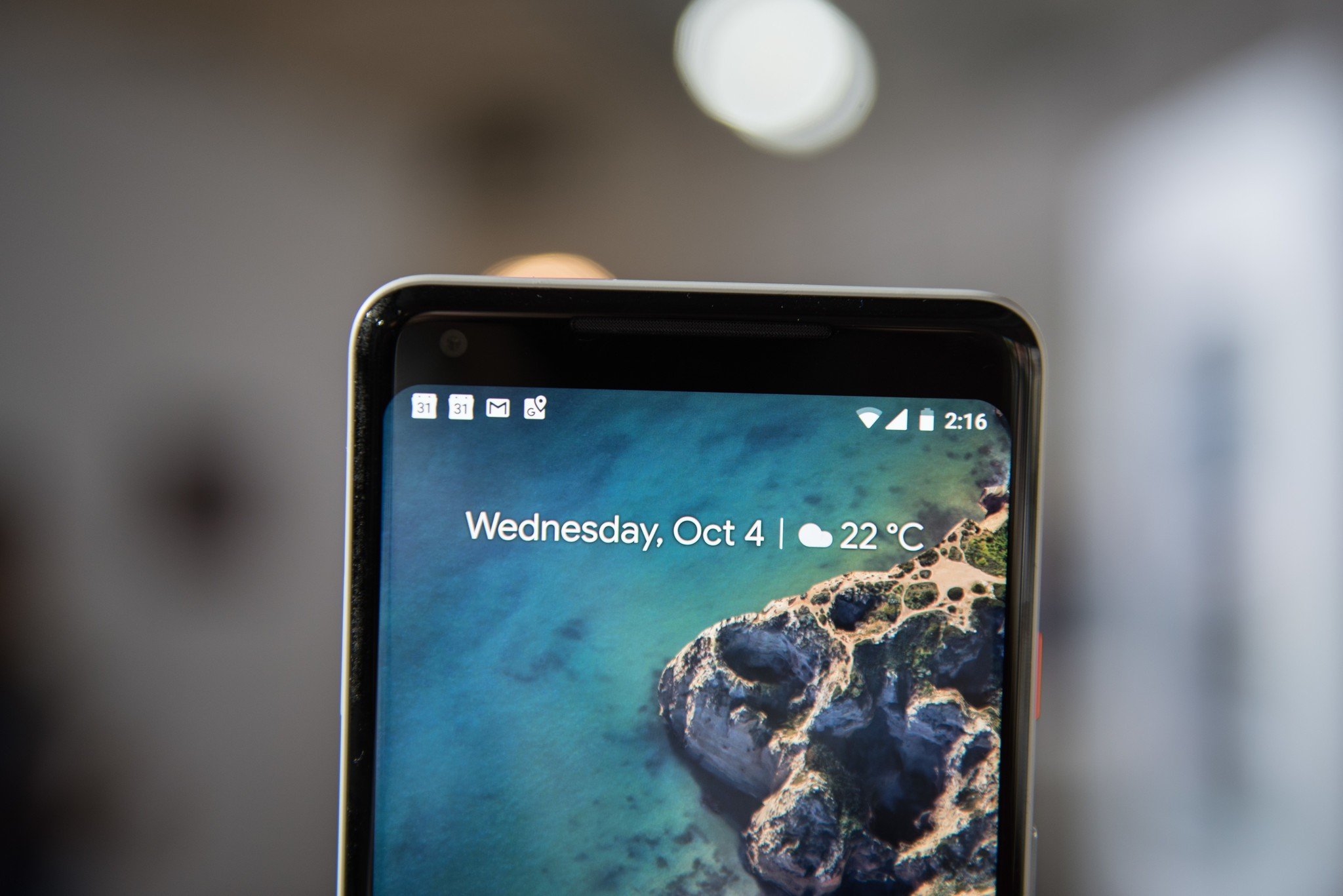Pixel 2 XL screen burn-in is real, Google working on software fixes to mitigate (update)

Consternation surrounding the display in the Google Pixel 2 XL is well known at this point, and to be honest most of it has been pretty overblown. But we have something new to talk about now: screen burn-in. It's something people with OLED screens worry about (to varying degrees) and something people who prefer LCDs like to poke fun about. But one of our Pixel 2 XL review units, in use for about a week, is already seeing some pretty crazy levels of burn-in.
That's some pretty wild OLED burn-in on the Pixel 2 XL after maybe 7 days of full-time use pic.twitter.com/EPJTs6D0KgThat's some pretty wild OLED burn-in on the Pixel 2 XL after maybe 7 days of full-time use pic.twitter.com/EPJTs6D0Kg— Alex Dobie (@alexdobie) October 22, 2017October 22, 2017
Viewing a grey image on the screen, you get a clear look at where the navigation bar has started to settle in on the display. You also interestingly see the portions of pixels where the back, home, and recents buttons go — those don't seem to be burned in themselves (displaying white instead of black), but the outlines clearly show where they are compared to the black portion that's burned in. Or that may be some optical trickery and the buttons are burned in. We're just not sure what we're seeing here.
So as a quick refresher, what is burn-in?
Screen burn-in happens when a portion of the display has the same imagery long enough to cause a ghost image of it to hang around after you change the screen to display something else. It's usually most noticeable in the notification shade or status bar (the clock is notorious for "burning in") but it can also happen with navigation buttons or even home screen icons. It's usually an issue with OLED panels and usually takes a good few months before it starts to show up.
When you change what's on your screen, leftover images can stay behind. But they shouldn't.
There's also a phenomenon called image retention. Image retention, or ghosting, is a part of the screen staying barely visible even after you've moved away and have something new on the display. Like burn-in, this usually happens with buttons or icons, but anything on your display can leave a ghost image if it's static and on long enough. Image retention is usually associated with LCD panels, and plenty of people with an LG G6 or LG V20 have noticed it. Thankfully, image retention is temporary and will go away on its own after a short time.
At first glance, what we see looks more like screen burn-in than image retention. While burn-in is more often associated with OLED and image retention is associated with LCD, there is crossover and you could see either issue on any type of display. As more reports come in and more people have examples to share the problem can hopefully be pinpointed.
How to check your screen
It can be difficult to see screen burn because we usually have so much information on our screens. Here's a quick test you can do to check your phone.
- Open this article in a web browser on your phone.
- Click and open each of these thumbnails and view the images full screen


- Check the bottom of your screen where the navigation buttons normally appear and check the notifications areas (especially around the clock) for a faint "ghost" image of any screen elements that were left behind.
Screen burn, of either type, can be barely noticeable or it can be distinct and in your face. Using a black or red background is the best way to see it, but you still may need to look very closely.
Get the latest news from Android Central, your trusted companion in the world of Android
What should you do?
This particular Pixel 2 XL, as we said, has only been in use for about a week — each day seeing about 3 hours of time with the screen on. We don't want to jump to the conclusion that this is indicative of how all Pixel 2 XL's will age, and we sure hope it that isn't the case. After tweeting out the image earlier today we started to get a few replies indicating that others were seeing the same type of burn-in after similar periods, though.
After reaching out to Google with our concerns, a spokesperson replied with the following statement, saying that the company is aware of the concerns surrounding this issue and is investigating it:
The Pixel 2 XL screen has been designed with an advanced POLED technology, including QHD+ resolution, wide color gamut, and high contrast ratio for natural and beautiful colors and renderings. We put all of our products through extensive quality testing before launch and in the manufacturing of every unit. We are actively investigating this report."
If you're seeing screen burn-in on a Pixel 2 XL (or any phone) after a week, or even just a month, of a regular use, you're going to be entitled to a warranty replacement from the manufacturer. As we saw with the 2016 Pixels, of which some experienced burn-in and screen issues early on, people were being granted posthaste warranty replacements.
What you shouldn't do is try any workarounds or apps from Google Play that promise to "fix" screen burn. Right now nobody even knows exactly what we're seeing, only that it's there. Hang tight and wait for more information before you make anything worse.
What Google wants to do to fix it
After a few days of investigating the problem, Google has come out with a response about the Pixel 2 XL's display. It's distinctly broken up into two pieces: one to address questions about the screen's colors, and another to talk about burn-in.
Google claims there's no major issue here — but it still has some fixes in the work.
On the first point, Google explains how it tuned the Pixel 2 XL's display to be more color accurate, following a DCI-P3 color gamut that focuses on being realistic with just a little extra pop. This compares to some other phones unfavorably, looking dull or washed out. To address this, Google plans to release a software update with a "saturated" screen mode that ups the colors — to what extent, we don't yet know. The Pixel 2 and 2 XL currently have a "vivid mode" for the screen, but the toggle doesn't seem to change much to our eyes.
Now, on the burn-in point — which is the problem that has really taken off. From the top, Google is at pains to explain that all OLED displays have some level of burn-in risk — and this is certainly backed up by history — so the only question is how fast the burn-in occurs, and how noticeable it is. Google claims that in its testing the Pixel 2 XL's burn-in and image retention issues are within the range of industry expectations,
Despite these claims, Google does plan to issue a set of software changes to mitigate or reduce screen burn-in over time on the Pixel 2 XL. The changes currently in the works include (but aren't limited to) a drop in the peak brightness by 50 nits, a navigation bar that fades out after a period of inactivity, and an option for more apps to use a white navigation bar.
Andrew was an Executive Editor, U.S. at Android Central between 2012 and 2020.


